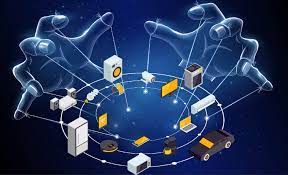IoT (Internet of Things) application development frameworks provide a set of tools, libraries, and services that facilitate the development of IoT applications. These frameworks help developers in building, deploying, and managing the various components of an IoT solution, such as connected devices, data processing, analytics, and user interfaces. Here are some popular IoT application development frameworks and platforms:
- Arduino: Arduino is an open-source hardware and software platform that provides a simple and beginner-friendly way to build IoT applications. It offers a range of microcontroller boards, sensors, and modules, along with a development environment that supports programming in C/C++.
- Raspberry Pi: Raspberry Pi is a credit-card-sized computer that can be used as the brain of an IoT application. It runs on Linux and supports various programming languages. Raspberry Pi provides GPIO (General Purpose Input/Output) pins that enable connection with external devices and sensors.
- Microsoft Azure IoT Suite: Azure IoT Suite is a comprehensive cloud-based IoT platform provided by Microsoft. It offers a wide range of services for device management, data storage, real-time analytics, and integration with other Azure services. Azure IoT Suite supports multiple programming languages and provides SDKs and APIs for developing IoT applications.
- AWS IoT Core: AWS IoT Core is a managed cloud service offered by Amazon Web Services (AWS). It allows developers to connect and manage a large number of devices securely. AWS IoT Core provides features like device provisioning, message brokering, and device shadowing. It also integrates well with other AWS services for data processing and storage.
- Google Cloud IoT Core: Google Cloud IoT Core is a fully managed service for securely connecting, managing, and ingesting data from IoT devices. It provides device management, data ingestion, and integration with other Google Cloud services like BigQuery, Cloud Pub/Sub, and Cloud Machine Learning Engine.
- IBM Watson IoT Platform: Watson IoT Platform is an IBM cloud-based platform that offers device management, real-time analytics, and cognitive capabilities for building IoT solutions. It provides a range of services for device connectivity, data storage, and analytics. It also integrates with other IBM Watson services like Watson Analytics and Watson Machine Learning.
- ThingWorx: ThingWorx is an IoT platform developed by PTC. It offers a complete set of tools and services for building, deploying, and managing IoT applications. ThingWorx provides features like device connectivity, data processing, visualization, and analytics. It also supports integration with other enterprise systems and platforms.
- Node-RED: Node-RED is a flow-based programming tool that simplifies the development of IoT applications. It provides a web-based interface for visually wiring together data streams from different IoT devices and services. Node-RED comes with a large number of pre-built nodes and supports a wide range of protocols and APIs. It is often used for rapid prototyping and building IoT solutions quickly.
- Eclipse IoT: Eclipse IoT is an open-source IoT development framework that offers a comprehensive set of tools and frameworks for building IoT applications. It includes components like Eclipse Paho for MQTT messaging, Eclipse Californium for CoAP (Constrained Application Protocol), and Eclipse OM2M for IoT device management. Eclipse IoT provides a flexible and extensible platform for IoT application development.
These are just a few examples of IoT application development frameworks and platforms available in the market. The choice of framework depends on factors such as the complexity of the application, scalability requirements, integration needs, and the programming languages and tools preferred by the development team.
SHARE
